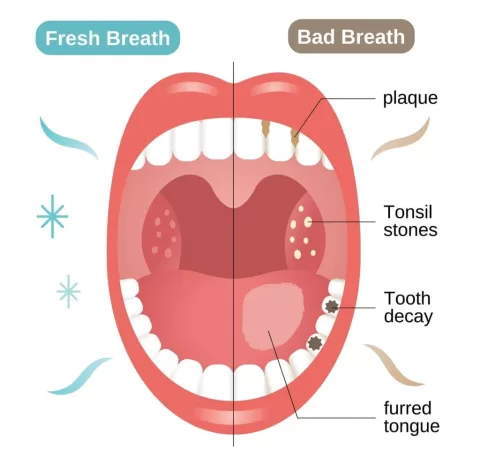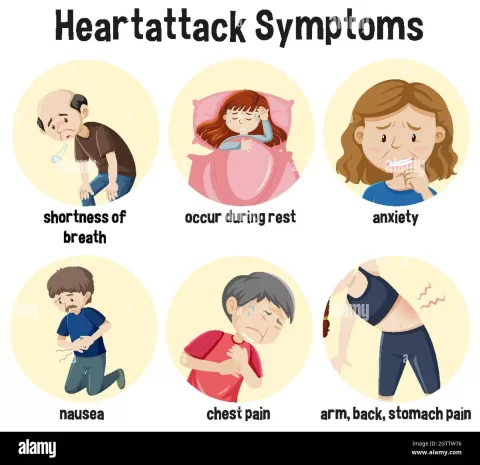Acute cholecystitis is a prevalent medical condition marked by the sudden inflammation of the gallbladder, primarily resulting from gallstone obstruction in the cystic duct. As this condition often leads to severe abdominal pain and complications, understanding the diagnosis of acute cholecystitis is critical for timely intervention. Patients typically present with acute cholecystitis symptoms such as right upper quadrant pain, fever, and nausea, making a rapid diagnosis vital. The management of cholecystitis often involves both medical and surgical avenues, focusing on alleviating symptoms and addressing inflammation. This comprehensive guide aims to provide insights into the effective surgical treatment of cholecystitis and evidence-based protocols that enhance patient recovery.
Acute cholecystitis, also referred to as gallbladder inflammation, represents a common surgical emergency. This condition often arises from the obstruction of the gallbladder’s cystic duct due to gallstones, leading to inflammation and infection. The clinical picture includes characteristic symptoms and necessitates appropriate diagnostic evaluations to confirm the condition. Effective management of gallbladder inflammation relies on a thorough understanding of both conservative and surgical treatment options to ensure optimal patient outcomes. In light of current medical advancements and research, healthcare professionals must stay informed about the latest techniques for the diagnosis and management of this alarming condition.
Understanding Acute Cholecystitis Symptoms
Acute cholecystitis is distinguished by a set of hallmark symptoms that play a critical role in its identification. Patients typically complain of intense pain in the right upper quadrant, which can be sudden and may radiate to the back or right shoulder. Accompanying this pain, fever is often present as a response to the inflammatory process affecting the gallbladder. Furthermore, nausea and vomiting frequently arise, contributing to overall patient distress and often warranting immediate medical attention. Recognizing these symptoms early is crucial for timely intervention, preventing the risk of further complications.
The severity and combination of symptoms can vary among patients, yet the presence of right upper quadrant pain combined with fever is a key indicator of acute cholecystitis. Medical professionals are advised to approach patients exhibiting these symptoms with a focused examination and consider imaging studies for a definitive diagnosis. Early recognition and management of these symptoms are essential to mitigating potential risks such as gallbladder perforation or suppuration.
The Diagnosis of Acute Cholecystitis: Imaging and Evaluation Techniques
Diagnosing acute cholecystitis involves a multi-faceted approach, primarily commencing with a detailed clinical history and physical examination. Comprehensive imaging studies are pivotal in confirming the diagnosis. Ultrasound is often the first-line investigation due to its non-invasive nature and efficacy in identifying gallstones and associated inflammatory changes in the gallbladder. A detailed ultrasound can reveal thickened gallbladder walls, pericholecystic fluid, and gallstones, all of which indicate acute cholecystitis.
When ultrasound results are inconclusive, Computed Tomography (CT) scans may be employed for a more detailed visualization of the abdominal structures. They can help uncover complications such as abscess formation or perforation. A Hepatobiliary Iminodiacetic Acid (HIDA) scan might be used in specific scenarios where gallbladder visualization is essential, particularly in atypical cases. This diagnostic procedure is definitive, as a non-visualization of the gallbladder suggests acute cholecystitis and aids in differentiation from other biliary conditions.
Management Strategies for Acute Cholecystitis
The management of acute cholecystitis hinges on both medical and surgical strategies, tailored to the patient’s clinical presentations and severity of disease. Initial medical management includes fluid resuscitation, which addresses dehydration, and analgesia for effective pain control. In addition, initiating broad-spectrum intravenous antibiotics is critical, as these can mitigate the risk of subsequent infections that may complicate the condition. The choice of antibiotics should target common pathogens associated with biliary infections to maximize therapeutic outcomes.
Surgical intervention remains a cornerstone in the definitive management of acute cholecystitis. A laparoscopic cholecystectomy is considered the gold standard for treating this condition, ideally performed within 24-48 hours post-diagnosis. Timely surgical intervention has been shown to significantly reduce the incidence of complications, including complications like perforated cholecystitis. For patients posing high surgical risk, alternatives like percutaneous cholecystostomy may be explored to manage the condition while minimizing surgical exposure.
Postoperative Care and Potential Complications
Postoperative care is a pivotal element following surgical management of acute cholecystitis. Monitoring for potential complications such as bile leakage and surgical site infections is critical as these can have a substantial impact on patient recovery. Bile leakage, though infrequent, occurs in about 1-2% of cases and can lead to significant morbidity. As such, early identification and intervention are paramount to manage these complications effectively.
Implementing enhanced recovery protocols is one effective strategy to reduce the occurrence of complications and to promote faster recovery times. This includes early mobilization, nutrition optimization, and active symptom management. A meticulous postoperative care plan not only helps in recognizing complications early but also facilitates quicker return to daily activities, ultimately enhancing overall patient outcomes in those recovering from acute cholecystitis.
Recent Research and Guidelines in Acute Cholecystitis Management
The management of acute cholecystitis is continuously informed by evolving research and updated clinical guidelines. Organizations such as the American College of Surgeons have emphasized the importance of early intervention in clinical practice. Recent findings indicate that patients who undergo early cholecystectomy experience fewer complications and shorter hospital stays compared to those who undergo delayed surgical treatment, reinforcing the need for timely management protocols.
Moreover, a multidisciplinary approach has emerged as a best practice in managing complex cases of acute cholecystitis. This approach facilitates optimal decision-making regarding surgical timing and the role of medical management in high-risk patients. Continuous research, such as systematic reviews published in respected journals, provides valuable insights that help refine treatment guidelines and ultimately aim to improve patient care standards for acute cholecystitis.
Frequently Asked Questions
What are the common symptoms of acute cholecystitis?
The symptoms of acute cholecystitis typically include severe right upper quadrant pain, which may radiate to the shoulder or back, fever, and nausea accompanied by vomiting. These signs are indicative of gallbladder inflammation and warrant immediate medical evaluation.
How is the diagnosis of acute cholecystitis confirmed?
The diagnosis of acute cholecystitis is confirmed through a thorough clinical evaluation and imaging studies. Ultrasound is the first-line tool, as it effectively detects gallstones and inflammation. If inconclusive, CT scans or HIDA scans may be used for a definitive diagnosis.
What is the surgical treatment of cholecystitis?
The surgical treatment of cholecystitis primarily involves laparoscopic cholecystectomy, which is the gold standard. It is best performed within 24-48 hours of diagnosis to reduce complications. For patients at high surgical risk, percutaneous cholecystostomy may be considered as an alternative.
What are the management strategies for acute cholecystitis?
Management strategies for acute cholecystitis include medical management, such as fluid resuscitation, analgesia, and antibiotics, followed by surgical intervention. Early laparoscopic cholecystectomy is recommended for optimal outcomes, especially in uncomplicated cases of gallbladder inflammation.
What are the potential complications following surgery for acute cholecystitis?
Potential postoperative complications following surgery for acute cholecystitis include bile leakage, which occurs in about 1-2% of cases, and postoperative infections. Monitoring for these complications is essential to ensure a smooth recovery and prevent further health issues.
| Key Points | Details |
|---|---|
| Definition | Acute cholecystitis is the inflammation of the gallbladder, primarily caused by gallstones blocking the cystic duct. |
| Causes | 90% of cases are due to gallstones; other causes include stricture, infections, or tumors. |
| Symptoms | – Severe right upper quadrant pain – Fever – Nausea and vomiting |
| Diagnosis | – Ultrasound (first-line) – CT scans (when ultrasound is inconclusive) – HIDA scan (for further assessment) |
| Management | 1. Medical: – Fluid resuscitation – Analgesia – Antibiotics 2. Surgical: – Laparoscopic cholecystectomy – Percutaneous cholecystostomy |
| Postoperative Care | Monitor for complications such as bile leakage and infections; follow enhanced recovery protocols for better outcomes. |
| Recent Research | Emphasizes early surgical intervention and a multidisciplinary approach for improved patient care and outcomes. |
Summary
Acute cholecystitis is an important medical condition that demands prompt diagnosis and management for optimal patient care. Understanding the disease’s underlying causes, recognizing characteristic symptoms, and applying appropriate diagnostic methods are essential steps in addressing acute cholecystitis. With advancements in surgical techniques and a focus on early intervention, healthcare professionals are better equipped to handle this prevalent issue, ultimately enhancing patient recovery and outcomes.
The content provided on this blog (e.g., symptom descriptions, health tips, or general advice) is for informational purposes only and is not a substitute for professional medical advice, diagnosis, or treatment. Always seek the guidance of your physician or other qualified healthcare provider with any questions you may have regarding a medical condition. Never disregard professional medical advice or delay seeking it because of something you have read on this website. If you believe you may have a medical emergency, call your doctor or emergency services immediately. Reliance on any information provided by this blog is solely at your own risk.







